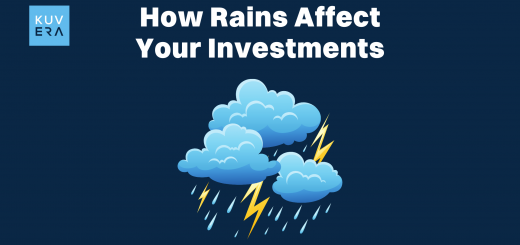Mutual fund investing has come a long way in India since 1963 when the government launched the first such product under the Unit Trust of India (UTI). While actively managed schemes dominated the Indian mutual fund landscape until a few years ago, passively managed schemes, especially index funds, are catching up. So what is passive investing?
Back in the 1970s, passive investing, especially via index funds, was popularised in the US by the Vanguard Group that was created by John Bogle. Since then, index funds have literally swept the mutual fund market not just in Bogle’s home country, but also across other developed markets such as Europe and Japan. Since the early 1990s the move towards passive index investing across these developed markets was further intensified with the widespread emergence of Exchange Traded Funds or ETFs.
Over the past few years, a similar trend is visible in India. Between the end of March 2017 and December 2023, the assets under management (AUM) of index funds in India increased by 81 times, from a little more than Rs 2,450 crore to a shade below Rs 2 trillion, according to data from the Association of Mutual Funds in India (AMFI). In the same period, the AUM of ETFs went up from Rs 50,200 crore to more than Rs 6.5 trillion.
What exactly is passive investing?
Passive investing is an investment strategy that aims to maximise returns by minimising buying and selling. Active strategies, on the other hand, try and eke out the best possible return by constantly churning the portfolio.
Passive strategies essentially tend to have a long-term plan of ‘buy and hold.’ Passive funds do not try and generate a return by capitalising on short-term changes in the stock market. Instead, passive strategies aim at generating steady, long-term gains without trading actively. They usually mimic a pre-defined index, so that the return generated mirrors that of the underlying index that it is trying to follow.
The basics of passive investing
At the heart of passive investing is a theory called the ‘efficient market hypothesis’ or EMH. The EMH theory basically says that share prices at any given point in time reflect all available information and consistently generating an ‘alpha’, or excess return over and above what the market is giving, is not possible. In other words, EMH says that stocks always trade at their fair values, making it impossible for investors and fund managers to buy undervalued stocks or offload them at inflated prices.
Passive investing strategies, therefore, do not try to better the market, but instead try to match its results that are being generated by it as a whole or by a specific sectoral or thematic index.
But what exactly is an index?
An index essentially measures the performance of a basket of securities that seeks to replicate a certain area of the market. Indices like the Sensex and the Nifty 50 represent stocks of the biggest listed Indian companies based on their free float market capitalisation.
In other words, an index defines a market segment. Securities belonging to the same segment are used to build an index. Apart from benchmarks like the Sensex and the Nifty, indices can be sector-specific such as a healthcare index, PSU index, banking index, IT index and auto index.
Indices can also be based on market capitalisation, tracking, for instance, large-cap stocks (Nifty Largecap Index), mid-cap stocks (Nifty Midcap Index) and small-cap stocks (Nifty Smallcap Index).
And what do index funds do?
Index funds invest in a basket of stocks that track an underlying index such as the Nifty 50, the Nifty Largecap or the Nifty Midcap Index, and generate the same returns as these indices, subject to a tiny variance called a tracking error. Index funds can be broadly divided into the following categories:
- Market capitalisation index funds: These funds typically follow indices such as the Nifty 50, Nifty Next 50, Nifty Midcap 150, Nifty Smallcap 250 and the Nifty 200.
- Broad market index funds: These track the broadest possible section of the stock market—like the Nifty 500, which covers the top 500 stocks by market capitalisation.
- Equal weighted index funds: These funds track indices that counterbalance the excess and underweighting of market-cap-weighted indices. In an equal weighted index, each stock bears the same weight.
- Sector-based index funds: Several index funds track sector-based ETFs and mutual funds. The underlying stocks broadly belong to the same industry or sectors such as banking, IT, healthcare, or infrastructure.
- Debt index funds: These track a mix of bonds with short, medium, and long-term maturities that help generate steady income.
- International index funds: These help investors gain exposure to the global market, bet on stocks whose performance is not correlated to the Indian economy, and so construct a diversified portfolio.

Important things to know about passive investing
- Patience pays: Passive investors, especially those trying to access the markets via index funds, should ideally only look for gains over the long term rather than over a short period of time.
- Transparency: Investment instruments such as index funds are transparent as it is amply clear how their assets are allocated. This level of transparency allows an investor to be absolutely sure of where their money is being invested by the mutual fund house and what is going on with it.
- Cheaper alternative: Since passive index funds do not trade shares actively and follow a long-term passive investment strategy, they incur significantly lower trading costs and so, can keep their expense ratios at the bare minimum. This, in turn, helps them generate higher returns.
Pros and cons of passive investing
- Cost efficiency and simplicity: Passive index funds and ETFs like Nifty BeES are low-cost and simple-to-understand instruments that try and generate returns being given by well-constructed indices such as Nifty 50, Sensex, Bank Nifty, Nifty Largecap Index, Nifty Midcap Index, Nifty Smallcap Index and by commodities such as gold and silver. ETFs have their own indices such as the popular Nifty BeES and Gold BeES.
- Tax efficiency: The fact that passive funds trade less than active ones makes them more tax efficient. This can result in significantly higher returns for the investor in the long run.
- Upside is limited: The rationale behind an actively managed fund charging higher fees or expense ratios is that active management can help generate returns higher than those of the market in general. So, although passive investors pay lower costs, they lose out on the benefits of active management that can help them grow their portfolio much quicker than they might do with index investing.
The way forward
The emergence of fintech apps like Kuvera has ensured that everyone has easy access to financial instruments. Fintechs have democratised financial investments in the country. Such platforms offer easy-to-use interfaces and simple-to-comprehend educational material to make passive strategies more appealing for investors.
As the Indian stock market matures, passive investing is likely to grow in India in much the same way as the phenomenon played out in the US and Europe. All of this will become possible thanks to more and more people learning about low-cost index funds, the emergence of digital platforms, and an investment friendly regulatory regime.
Interested in how we think about the markets?
Read more: Zen And The Art Of Investing
Watch here: Index funds explained
Start investing through a platform that brings goal planning and investing to your fingertips. Visit kuvera.in to discover Direct Plans and Fixed Deposits and start investing today.











